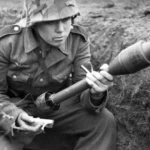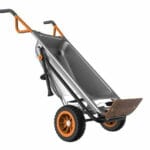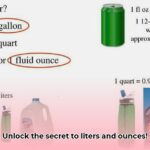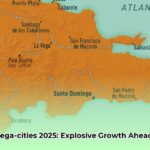Imagine you’re miles from civilization, the sun dipping below the horizon, and your stomach growling. A warm meal would be a game-changer. Whether you’re a soldier on deployment, a weekend warrior tackling a challenging trail, or prepping for emergencies, the humble MRE heater can be a lifesaver. This comprehensive guide dives into everything you need to know about these pocket-sized powerhouses, from the science behind their heat to innovative uses you might never have considered. Let’s unlock the secrets of the MRE heater!
Decoding the MRE Heater
What is an MRE Heater?
An MRE (Meal, Ready-to-Eat) heater, officially known as a flameless ration heater (FRH), is a self-contained heating pouch designed to warm MREs. Introduced in 1993, these ingenious packets revolutionized field dining, replacing older, less convenient methods like Sterno or portable stoves. Inside, you’ll find a mix of magnesium, iron, and salt – a seemingly simple recipe for heat-on-demand. Simply add water, and watch the magic happen. No fire, no fuss, just a warm meal wherever you are.
How MRE Heaters Work: The Chemistry of Heat
The secret to the MRE heater’s magic lies in a powerful exothermic chemical reaction. When water meets the magnesium-iron alloy within the pouch, a rapid oxidation process begins, generating heat. The iron acts as a catalyst, accelerating the reaction between magnesium and water without being consumed itself. Salt helps regulate the reaction rate, ensuring a controlled and consistent heat output. The chemical equation, Mg + 2H₂O → Mg(OH)₂ + H₂ + heat, summarizes the transformation: magnesium (Mg) and water (H₂O) react to produce magnesium hydroxide (Mg(OH)₂), hydrogen gas (H₂), and, crucially, heat. This heat, reaching temperatures of up to 212°F (100°C), is what warms your MRE.
Using an MRE Heater: A Step-by-Step Guide
Using an MRE heater is remarkably simple:
- Open the Heater Pouch: Tear open the top of the heater pouch along the designated area.
- Insert the MRE: Place your sealed MRE entree inside the heater pouch, ensuring it fits snugly.
- Add Water: Carefully pour water into the heater pouch up to the fill line marked on the inside. Don’t overfill. The correct amount of water is crucial for the reaction to proceed effectively.
- Activate and Wait: Stand the pouch upright, using the provided cardboard sleeve or another stable surface. The reaction will begin immediately, producing heat and steam. Wait 10-15 minutes for your MRE to heat through. The actual time may vary based on factors like ambient temperature and the density of the food.
- Enjoy Your Meal: Carefully remove the heated MRE from the pouch and enjoy!
MRE Heater Safety and Disposal: Handling with Care
While MRE heaters are incredibly convenient, responsible use and disposal are crucial.
- Unactivated Heaters: Unactivated MRE heaters are classified as hazardous materials due to the presence of unreacted magnesium. Do not dispose of them in regular trash. Consult your local regulations for proper hazardous waste disposal. They also present a potential fire hazard if exposed to water or other reactive substances.
- Activated Heaters: Once activated and cooled completely, MRE heaters are safe to discard with regular trash.
- Confined Spaces: The FAA explicitly warns against using MRE heaters in confined spaces like aircraft cabins or tents without adequate ventilation. The chemical reaction produces hydrogen gas, which is flammable and can accumulate in enclosed areas, posing a potential hazard.
MRE Heater Applications: Beyond the Meal, Ready-to-Eat
Although originally designed for military use, MRE heaters have found a much wider range of applications:
- Military: A cornerstone of military rations, providing hot meals in the field where traditional cooking is impractical.
- Camping and Hiking: A lightweight and convenient alternative to camp stoves, perfect for backpackers and outdoor enthusiasts.
- Emergency Preparedness: An essential component of any disaster preparedness kit, ensuring access to warm food during power outages, natural disasters, or other emergencies.
- Survival Situations: A reliable way to heat food when other methods are unavailable.
- Everyday Convenience: Even at home, MRE heaters can be handy for a quick meal during power outages or when you simply want a no-fuss option.
The Future of MRE Heaters: Innovation and Sustainability
MRE heater technology is constantly evolving. Research focuses on:
- Eco-Friendly Materials: Scientists are exploring biodegradable and more sustainable materials for heater pouches to reduce environmental impact.
- Extended Heat Times: Research aims to prolong the heating duration, allowing for larger meals or slower cooking.
- Alternative Applications: The exothermic reaction could potentially power hand warmers, small-scale sterilization devices, or other innovative tools.
Comparing MRE Heaters to Other Portable Cooking Methods
| Feature | MRE Heater | Portable Stove | Self-Heating Meals |
|---|---|---|---|
| Fuel | Water | Butane/Propane/Other Fuel | Self-contained exothermic reaction |
| Ease of Use | Extremely simple | Requires setup and fuel management | Just add water |
| Heat Output | Moderate | High, adjustable | Moderate |
| Cook Time | 10-15 minutes | Varies depending on stove and food | Varies, usually 8-12 minutes |
| Cost | Relatively inexpensive | Moderate to high | More expensive than MRE heaters |
| Environmental Impact | Some concerns due to chemical waste | Fuel canisters create waste | Varies depending on the heating method used |
| Shelf Life | At least 5 years (when stored properly) | N/A | Check individual product packaging |
MRE Heater Hacks: Maximizing Your Heat
Here are a few tips to optimize your MRE heater’s performance:
- Pre-heated Water: Using warm or hot water can speed up the heating process and potentially increase the maximum temperature reached.
- Insulation: Wrapping the heater and MRE pouch in a towel, jacket, or other insulating material can help retain heat and ensure a more thoroughly warmed meal.
- Experimentation: Don’t be afraid to try different techniques. You might discover surprising ways to improve your MRE heater’s effectiveness.
Comparing MRE Heater Brands
Several MRE heater brands exist, each with its own characteristics. Factors to consider include:
- Maximum Heat Output: How hot does the heater get?
- Heat Duration: How long does the heat last?
- Magnesium Type: Different types of magnesium may influence performance.
- Cost: Prices vary between brands.
Researching different brands can help you find the perfect fit for your needs.
Ongoing Research and Future Directions
While the basic principles of MRE heaters are well-understood, ongoing research explores areas like:
- Reaction Rates: Scientists are investigating how to optimize the reaction rate for faster heating.
- Efficiency: Research seeks to maximize heat output while minimizing waste.
- Alternative Chemical Compositions: Studies explore different chemical combinations for increased efficiency or reduced environmental impact.
This ongoing research suggests that the MRE heaters of the future may be even more efficient, sustainable, and versatile.
For tasks requiring a firm grip in tight spaces, consider the versatility of needle nose vise grips. For an exhilarating performance boost, unleash the raw power of nitromethane fuel.
- 1 Liter to Fluid Ounces: Easy Conversion Guide - April 9, 2025
- Unlock what is the seventh month: A Cross-Cultural Calendar Guide - April 9, 2025
- Discover White Fruits: Ultimate Guide to Taste & Nutrition - April 8, 2025















